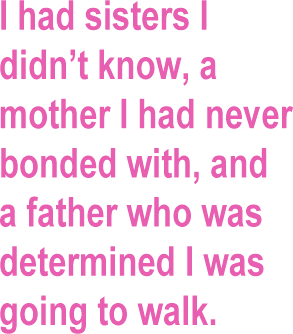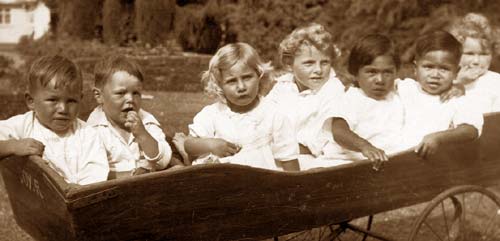
Hydrotherapy treatment was in the damp basement pool, and then the little patients were again laid out for more therapy in the sun.
Culture shock
Skilled and caring nurses become like family over the years.
No matter how much my parents wanted to visit, they only came once a month from a long distance.
They were strangers to me, and when I was sent home ready to start school, ‘outside’ life was a culture shock.

He diligently massaged my weak legs and stood me up every time I fell down.
To him I owe my stubborn streak.
As a child I came under the care of the Crippled Children’s Society, as it was then known (but don’t use those words now, will you!).
I attended regular school but didn’t do well with my lessons.
CCS arranged for me to do extra classes and I graduated from Seddon Memorial College with secretarial skills.
for more information about Post Polio
I walked with leg braces and crutches, and didn’t look like the usual young elegant office girl anyone would want to employ, and was told so.
This was in the 1960’s; the Equal Employment Opportunity statutes didn’t exist back then. Buildings didn’t have ramps, and there were
CCS again helped, funding a car and driving lessons, and I became mobile.
I put polio behind me and got on with life.
Marriage, children, career and a life worth living followed; no matter that I still wore braces and walked funny.
Epidemics of polio raged through New Zealand. Early records show the initial major outbreak in 1914, epidemics in 1916, 1924-25, 1936-37, and 1947-48, with smaller outbreaks between these years.
Common experiences
Regular polio ‘seasons’ followed in 1952-53 and 1955-56. The last outbreak was in 1961.
Salk and Sabin’s vaccine discovery brought a dramatic stop to epidemics in New Zealand as the mass immunisation campaigns began in the late 1950s.
But we are still here.
My story has similar elements to those of most people who had polio.
We are all in a time capsule of common experiences.
Paralysis, isolation, hospitalisation, years of rehabilitation, plaster casts, splints, hot blanket wraps, muscles being pulled and pounded, massages, water exercises, special shoes, braces, sticks and crutches were all part of our early lives to some extent.

Survivors
Somewhere in the polio experience, an unusual personality trait was being nurtured in those who survived these epidemics.
We had come through the gruelling rehabilitation.
Our collective self-talk went something like this: “We must recover, we’ve got to pass for normal, we must make more effort than anyone else, we need to do 120 percent more than is required of us. If we achieve a lot more than others, maybe we will be considered normal.”
The so-called A type personality that often marks polio survivors has become our own worst enemy.
We tried so hard (too hard) during
